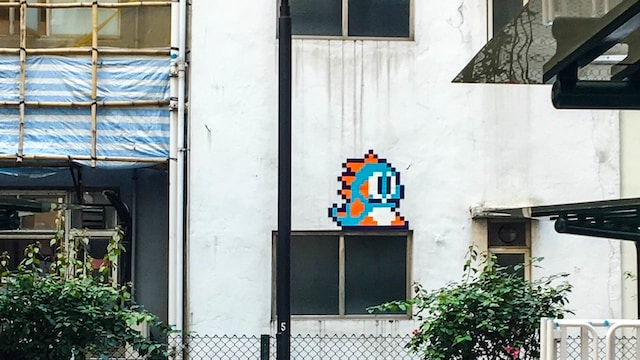We need more cute software
Innovation opportunity for B2B SaaS 2023-05-09 #UX #remote

1986 platformer Bubble Bobble (fan wiki) added two unconventional elements to arcade games. We could still learn from its innovation.
Cute and cooperative
Instead of two players fighting or otherwise competing against each other, Bubble Bobble had a cooperative two-player mode. Bubble Bobble also featured cute graphics, with green and blue dragons for the players’ characters, and lots of bubbles to pop.

Bubble Bobble’s designer, Fukio Mitsuji, explained in a video interview that he wanted to bring more couples into arcades, to play together:
That’s why I designed cute characters and included cooperative play in Bubble Bobble.
As a teenager playing the game’s 1987 Atari ST port, I wasn’t thinking about this at all, but looking back, the wholesome bubble-popping game mechanics didn’t make it any less fun.
Business software collaboration
Business software does not celebrate cuteness. Business software speaks corporate, and likes shades of grey and trustworthy dark blue colours. But perhaps not everyone wants business software to be boring.
On a more positive note, the last twenty years’ shift to web-based software-as-a-service (SaaS) has seen business software embrace co-operative play. They don’t call it play, of course, but business software now commonly features basic collaboration capabilities, such as comments and notifications.
Start-up company Liveblocks goes further and offers a rich set of embeddable collaboration capabilities to application developers. Collaboration features have now become enough of a commodity that product development teams no longer have to build their own. However, despite the growing popularity of user-interface design systems, such as Material Design, none of them will make your software cute.
Companies don’t want cute software
The larger a company gets, the more bland its office interiors become. Perhaps the costs of better design become harder to accept, as they scale with company size. Perhaps interior design dies from a thousand tiny spreadsheet-based cost reductions, that add up at scale. And sometimes, companies manage to create boring working environments, however much they spend.
If companies that buy business software actually wanted cute software, they’d probably get it. Corporate IT procurement, meanwhile, has other priorities. Notably, products like Salesforce demonstrate that, like the expensive office furniture, choosing ugly and boring software doesn’t save money.
Small companies don’t want boring software
Big companies don’t actually want nice things, when the people who buy the software don’t use it themselves. Perhaps that’s why small companies use less horrible tools - an unexpected advantage to working there.
Small companies used to have cool offices. They either blew investor capital on interior design, or at least went to Ikea and chose colours other than grey and beige. Today, remote-first companies don’t waste money on office-space, leaving more of the employee experience at the mercy of their software tools. This makes business software look-and-feel a company culture issue.
Diversity includes cuteness
You can see workplace diversity in the range of emoji and memes that employees use in tools like Notion and Slack. If they don’t include cute content, the company probably lacks the inclusivity to both welcome people who like cute things and make them feel comfortable expressing themselves.
Without cute office interiors to create a welcoming vibe, remote-first companies need cute software to express their company culture, values and personality. Because when we say cute, we mean human.

